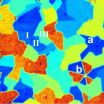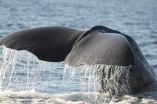(Press-News.org) May 1, 2014 [San Diego, CA] – New research exploring the potential effects of Hass avocado consumption on emerging cardiovascular disease (CVD) risk factors was presented at the American Society for Nutrition Scientific Sessions and Annual Meeting at Experimental Biology 2014 (EB).
Li Wang, PhD Candidate, Pennsylvania State University, presented, "Avocado consumption decreases LDL particle number and small, dense LDL cholesterol in overweight and obese subjects," at the Dietary Bioactive Components: Cardiovascular Effects of Dietary Bioactive Components session on Saturday morning, April 26. The research was based on a clinical study that investigated whether eating one Hass avocado every day as part of a moderate fat diet (34 percent fat) had a beneficial effect on risk factors for CVD among healthy overweight and obese subjects, compared to a similar moderate fat diet without avocados, and a lower fat diet. The researchers, Wang and primary investigator, Penny Kris Etherton, PhD, RD, found that relative to baseline, although all three diets lowered LDL cholesterol (LDL-C), only the avocado diet significantly decreased low density lipoprotein particle number (LDL-P); there was no significant change in LDL-P with the moderate fat diet without avocado or the low fat diet. Researchers also observed that the avocado diet significantly lowered small, dense LDL cholesterol (a more atherogenic subclass of LDL) and oxidized LDL (atherogenic modified LDL particle). The study was supported by the Hass Avocado Board (HAB) and was also nominated as one of five finalists for the Clinical Emerging Leader Award Competition.
"As new research is published on CVD risk factors, we're learning that it may not simply be the level of LDL cholesterol that matters, but rather the particle number, size, density and especially oxidative modification of the LDL particles," said Penny Kris-Etherton, Distinguished Professor of Nutrition at the Pennsylvania State University. "Research is beginning to show that small, dense LDL particles, in particular, may be more likely to be oxidized and form plaques in the arteries compared to large, buoyant LDL particles."
"Our findings show that there is something unique about the avocado beyond its MUFA content that helped to specifically decrease small, dense LDL in healthy overweight and obese adults," said Wang.
INFORMATION:
HAB is supporting clinical studies to investigate the unique, positive benefits of consuming fresh Hass avocados to human health and nutrition. Research is currently underway to investigate the relationship between avocado consumption and risk factors for cardiovascular disease, avocados' potential positive role in weight management and diabetes, and avocados' ability to enhance nutrient absorption.
HAB's Avocado Nutrition Center just received a new look. Visit AvocadoNutritionCenter.com to view a comprehensive collection of published nutrition and scientific literature, authoritative reports, and other articles on or related to avocados, their nutrients and eating patterns that include them.
About the Hass Avocado Board
The Hass Avocado Board was established in 2002 to promote the consumption of Hass avocados in the United States. A 12-member board representing domestic producers and importers of Hass avocados directs HAB's promotion, research and information programs under supervision of the United States Department of Agriculture. Hass avocados are grown in California and imported into the US from Mexico, Chile, Peru, Dominican Republic and New Zealand.
New Hass avocado research presented at American Society for Nutrition Scientific Sessions
Pennsylvania State University study explores connection between diets high in monounsaturated fat with emerging cardiovascular disease risk factors
2014-05-01
ELSE PRESS RELEASES FROM THIS DATE:
Edgy look at 2-D molybdenum disulfide
2014-05-01
The drive to develop ultrasmall and ultrafast electronic devices using a single atomic layer of semiconductors, such as transition metal dichalcogenides, has received a significant boost. Researchers with the U.S. Department of Energy (DOE)'s Lawrence Berkeley National Laboratory (Berkeley Lab) have recorded the first observations of a strong nonlinear optical resonance along the edges of a single layer of molybdenum disulfide. The existence of these edge states is key to the use of molybdenum disulfide in nanoelectronics, as well as a catalyst for the hydrogen evolution ...
Some Ohio butterflies threatened by rising temperatures
2014-05-01
The combined heat from climate change and urbanization is likely to reduce the number of eastern swallowtails and other native butterflies in Ohio and promote the spread of invasive relatives, a new study led by a Case Western Reserve University researcher shows.
Among 20 species monitored by the Ohio Lepidopterists society, eight showed significant delays in important early lifecycle events when the two factors were combined—a surprising response that may render the eight unfit for parts of the state where they now thrive.
Butterflies serve as important indicator ...
Whales hear us more than we realize
2014-05-01
RICHLAND, Wash. – Killer whales and other marine mammals likely hear sonar signals more than we've known.
That's because commercially available sonar systems, which are designed to create signals beyond the range of hearing of such animals, also emit signals known to be within their hearing range, scientists have discovered.
The sound is likely very soft and audible only when the animals are within a few hundred meters of the source, say the authors of a new study. The signals would not cause any actual tissue damage, but it's possible that they affect the behavior ...
Penn Vet research identifies compounds that control hemorrhagic viruses
2014-05-01
People fear diseases such as Ebola, Marburg, Lassa fever, rabies and HIV for good reason; they have high mortality rates and few, if any, possible treatments. As many as 90 percent of people who contract Ebola, for instance, die of the disease.
Facing this gaping need for therapies, researchers at the University of Pennsylvania School of Veterinary Medicine teamed with colleagues to focus on identifying and developing compounds that could reduce a virus' ability to spread infection. In two studies published in the Journal of Virology, the researchers have identified several ...
Hubble astronomers check the prescription of a cosmic lens
2014-05-01
Two teams of astronomers using the NASA/ESA Hubble Space Telescope have discovered three distant exploding stars that have been magnified by the immense gravity of foreground galaxy clusters, which act like "cosmic lenses". These supernovae are the first of their type ever to be observed magnified in this way and they offer astronomers a powerful tool to check the prescription of these massive lenses.
Massive clusters of galaxies act as "gravitational lenses" because their powerful gravity bends light passing through them [1]. This lensing phenomenon makes faraway objects ...
The real difference between how men and women choose their partners
2014-05-01
This news release is available in French. In Concordia's study, men responded more strongly to the "framing effect" when physical attractiveness was described.
A hamburger that's 90 per cent fat-free sounds a lot better than one with 10 per cent fat. And even when the choices are the same, humans are hard-wired to prefer the more positive option.
This is because of what's known as the "framing effect," a principle that new research from Concordia has proved applies to mate selection, too.
The study — co-authored by Concordia marketing professor Gad Saad and Wilfrid ...
Casualties get scant attention in wartime news, with little change since World War I
2014-05-01
The human costs of America's wars have received scant attention in daily war reporting – through five major conflicts going back a century – says an extensive and first-of-its-kind study of New York Times war coverage being published this month.
It's timely research given the major anniversaries this year for three of those conflicts.
No matter the war, the number of dead and wounded, the degree of government censorship, the type of warfare, or whether volunteers or draftees are doing the fighting, casualties get little mention, says Scott Althaus, a University of Illinois ...
Can money buy happiness? For some, the answer is no
2014-05-01
SAN FRANCISCO, May 1, 2014 -- Many shoppers, whether they buy material items or life experiences, are no happier following the purchase than they were before, according to a new study from San Francisco State University.
Although previous research has shown experiences create greater happiness for buyers, the study suggests that certain material buyers -- those who tend to purchase material goods -- may be an exception to this rule. The study is detailed in an article to be published in the June edition of the Journal of Research in Personality.
"Everyone has been told ...
Scientists propose amphibian protection
2014-05-01
An ecological strategy developed by four researchers, including two from Simon Fraser University, aims to abate the grim future that the combination of two factors could inflict on many amphibians, including frogs and salamanders.
A warming climate and the introduction of non-native fish in the American West's mountainous areas are combining to threaten the habitat that this ecologically critical group of species needs to thrive.
Previous studies predict the combined effect of climate change and non-native fish could cause amphibian populations to decline and even ...
Noncombat injury top reason for pediatric care by military surgeons in Afghanistan, Iraq
2014-05-01
Chicago (May 1, 2014): Noncombat-related injury—caused by regular car accidents, falls and burns—is the most common reason for pediatric admissions to U.S. military combat hospitals in both Iraq and Afghanistan reveals new study findings published in the May issue of the Journal of the American College of Surgeons.
In recent years, research has shown that Army hospitals treat a significant number of wounded and sick children in Iraq and Afghanistan. But the new analysis explores the nature of that care, determining how many children were treated for combat-related injuries ...
LAST 30 PRESS RELEASES:
Making lighter work of calculating fluid and heat flow
Normalizing blood sugar can halve heart attack risk
Lowering blood sugar cuts heart attack risk in people with prediabetes
Study links genetic variants to risk of blinding eye disease in premature infants
Non-opioid ‘pain sponge’ therapy halts cartilage degeneration and relieves chronic pain
AI can pick up cultural values by mimicking how kids learn
China’s ecological redlines offer fast track to 30 x 30 global conservation goal
Invisible indoor threats: emerging household contaminants and their growing risks to human health
Adding antibody treatment to chemo boosts outcomes for children with rare cancer
Germline pathogenic variants among women without a history of breast cancer
Tanning beds triple melanoma risk, potentially causing broad DNA damage
Unique bond identified as key to viral infection speed
Indoor tanning makes youthful skin much older on a genetic level
Mouse model sheds new light on the causes and potential solutions to human GI problems linked to muscular dystrophy
The Journal of Nuclear Medicine ahead-of-print tip sheet: December 12, 2025
Smarter tools for peering into the microscopic world
Applications open for funding to conduct research in the Kinsey Institute archives
Global measure underestimates the severity of food insecurity
Child survivors of critical illness are missing out on timely follow up care
Risk-based vs annual breast cancer screening / the WISDOM randomized clinical trial
University of Toronto launches Electric Vehicle Innovation Ontario to accelerate advanced EV technologies and build Canada’s innovation advantage
Early relapse predicts poor outcomes in aggressive blood cancer
American College of Lifestyle Medicine applauds two CMS models aligned with lifestyle medicine practice and reimbursement
Clinical trial finds cannabis use not a barrier to quitting nicotine vaping
Supplemental nutrition assistance program policies and food insecurity
Switching immune cells to “night mode” could limit damage after a heart attack, study suggests
URI-based Global RIghts Project report spotlights continued troubling trends in worldwide inhumane treatment
Neutrophils are less aggressive at night, explaining why nighttime heart attacks cause less damage than daytime events
Menopausal hormone therapy may not pose breast cancer risk for women with BRCA mutations
Mobile health tool may improve quality of life for adolescent and young adult breast cancer survivors
[Press-News.org] New Hass avocado research presented at American Society for Nutrition Scientific SessionsPennsylvania State University study explores connection between diets high in monounsaturated fat with emerging cardiovascular disease risk factors




